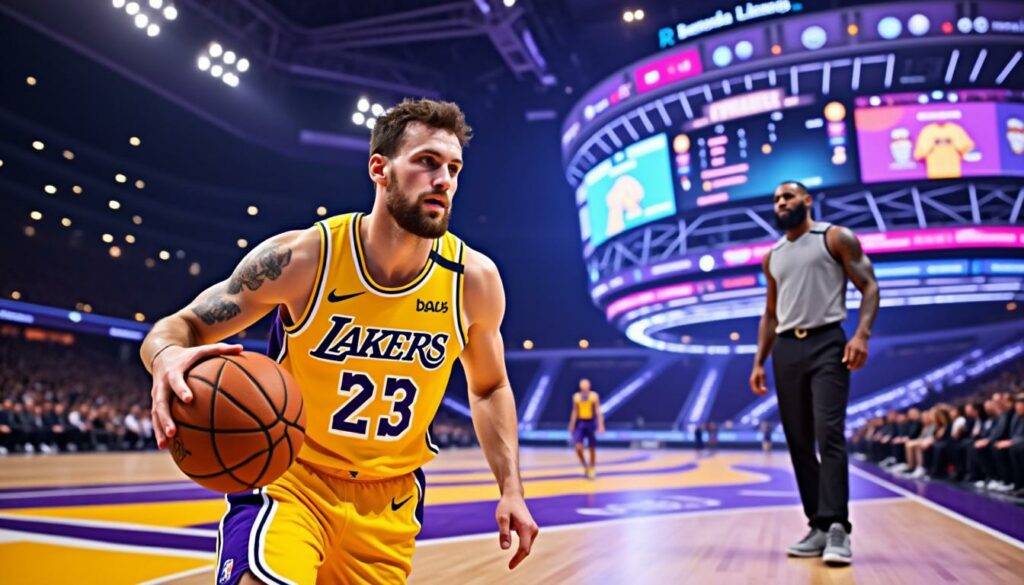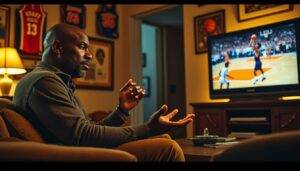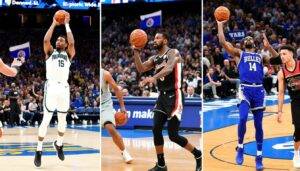The Lakers' next chapter: aligning with Luka, LeBron's prospects, and the transformative potential of 2027

The Los Angeles Lakers stand on the cusp of a new era as they endeavor to build a championship contender around Luka Doncic while navigating the complex future of LeBron James. With Doncic locked in by a lucrative extension and LeBron's prospects still uncertain, the franchise's blueprint for success revolves around strategic roster construction, cap management, and seizing the transformative potential of the 2027 NBA offseason. This critical juncture challenges the Lakers' front office to strike the right balance between immediate competitiveness and long-term sustainability in a league marked by relentless parity and evolving team dynamics.
Lakers' Roster Evolution: Building A Contender Around Luka Doncic
Since LeBron James' arrival in 2018 restored the Lakers' relevance, the franchise has pivoted toward a future anchored by Luka Doncic, whose three-year, $165 million extension signals a commitment to his star power. At just 26, Luka demands an aggressive push for contention, reportedly stating at a dinner with Lakers management, “I don’t want to wait.” This urgency reshapes the Lakers’ approach to roster construction, emphasizing complementary players tailored to maximize Doncic’s unique skills.
Key Player Archetypes to Surround Luka
- Rim-Running Centers: Luka’s pick-and-roll prowess thrives with an athletic big man capable of executing lobs and finishing near the rim. Previously, his synergy with Dereck Lively II in Dallas exemplified how a powerful center amplifies his effectiveness.
- Knockdown Shooters: Given Luka’s unparalleled ability to generate corner three attempts, surround players who excel at efficient perimeter shooting to stretch defenses and create space.
With the Lakers' current rotation lacking elite shooters—among them Rui Hachimura and young wings like Jake LaRavia and Dalton Knecht—acquiring reliable perimeter marksmen is a pressing priority. Fortunately, league-wide abundance in shooting talent offers opportunities for savvy trades or signings, from veterans like Luke Kennard to sharpshooters such as Grayson Allen or Sam Hauser.
On the flip side, dependable two-way big men remain a scarcity. Newly added Deandre Ayton offers decent defense and pick-and-roll chemistry but falls short of the athleticism Luka demands compared to top-tier rim runners. Whether the Lakers prioritize chasing another All-Star center or banking on Luka’s transformative ability to elevate any rim runner remains a pivotal strategic choice.
LeBron James’ Role and Prospects in Lakers’ Next Chapter
LeBron James, now in the twilight of his career at 40, holds a unique position within the Lakers’ evolving narrative. His no-trade clause and $52.6 million salary for the 2025-26 season provide both security and potential complications. Though conversations emphasize respecting LeBron’s timeline, as Lakers’ president Rob Pelinka noted, “If he had a chance to retire as a Laker, that would be great.” Yet, the hours ahead for LeBron are marked by uncertainty.
- Retirement Considerations: A one-year return could serve mutual interests—offering veteran leadership while preserving cap space for the Lakers’ 2027 ambitions.
- Trade Scenarios: Trading LeBron before his contract ends is fraught with salary and roster constraints for most potential suitors, rendering a move unlikely.
- Free Agency Options: Upon next summer’s free agency, multiple teams might court LeBron, but cap constraints and team priorities will shape his choices.
Exploring LeBron’s future requires a delicate balance between honoring his legacy and the Lakers’ need to remain competitive around Luka. Their coexistence underscores the team dynamics that may define Los Angeles basketball's near-term identity.
Strategic Cap and Draft Management Toward 2027's Transformative Potential
Looking beyond immediate roster adjustments, the Lakers' front office faces a three-tiered plan: strengthening now, positioning for next offseason, and unleashing full potential in 2027. This year, salary cap restrictions and a hard cap at the first apron limit acquisitions, but freeing up space by moving expiring contracts or making strategic trades remains key.
- Current Assets: Expiring deals of Rui Hachimura, Maxi Kleber, and Gabe Vincent might yield $40 million in cap space next season.
- Draft Capital Constraints: Limited tradeable first-round picks restrict blockbuster trades, requiring creative maneuvering for impactful talent acquisition.
- Future Free Agency Windfall: The 2027 summer presents an opportunity with stars like Giannis Antetokounmpo, Stephen Curry, and Nikola Jokic possibly available—cap space that could revolutionize the Lakers’ championship hopes.
The challenge lies not just in having cap space but in competing against other savvy suitors who can lock down their stars early, highlighting the need for Los Angeles to execute on trades and free agency wisely.
2027: A Pivotal Turning Point for Lakers Dynasty Aspirations
With ownership deeply invested and management determined, the Lakers view 2027 not merely as another offseason but as a potential rebirth. Harnessing the allure of playing alongside Luka in the Los Angeles spotlight could attract top-tier free agents. The strategy echoes past successes when cap flexibility allowed the Lakers to land LeBron and reshape a championship roster leading to 2020 glory.
- Exploit expiring contracts this upcoming offseason to acquire key role players who fit Luka’s style.
- Maintain cap discipline to afford maximum flexibility heading into 2027.
- Use draft assets judiciously to build depth while targeting underrated talent.
- Leverage the Los Angeles market and new ownership to enhance sports sponsorships and player appeal.
The Critical Role of Supporting Players: Austin Reaves and Beyond
Austin Reaves has emerged as one of the Lakers' most promising developmental stories, progressing from undrafted status to a key contributor averaging over 20 points per game. However, his future remains under discussion, with anticipated market offers potentially surpassing $30 million annually.
Reaves' performance in high-pressure playoff scenarios will likely influence negotiations, as the Lakers evaluate if retaining him aligns with their long-term vision alongside Doncic. Team insiders stress the necessity for Reaves to elevate his game, particularly in crucial moments, to justify a substantial contract in a competitive backcourt landscape.
- Reaves' 3-Point Shooting: Critical for spacing alongside Luka.
- Defensive Reliability: Essential for mask Luka's defensive shortcomings.
- Playoff Production: A benchmark for contract valuation.
Balancing Reaves’ development with adding proven 3-and-D wings remains a cornerstone of Lakers’ roster upgrades heading into the immediate seasons, reflecting broader themes in crafting sustainable championship team dynamics.
For those tracking the Lakers’ journey and off-court maneuvers in depth, more analysis on their ongoing evolution can be found at Basketball Evolution's Lakers Future Playoffs and NBA Free Agency Lakers Challenges. Meanwhile, updates on Anthony Davis’ health and its impact on title hopes are covered at Anthony Davis Set to Play Game 6.

